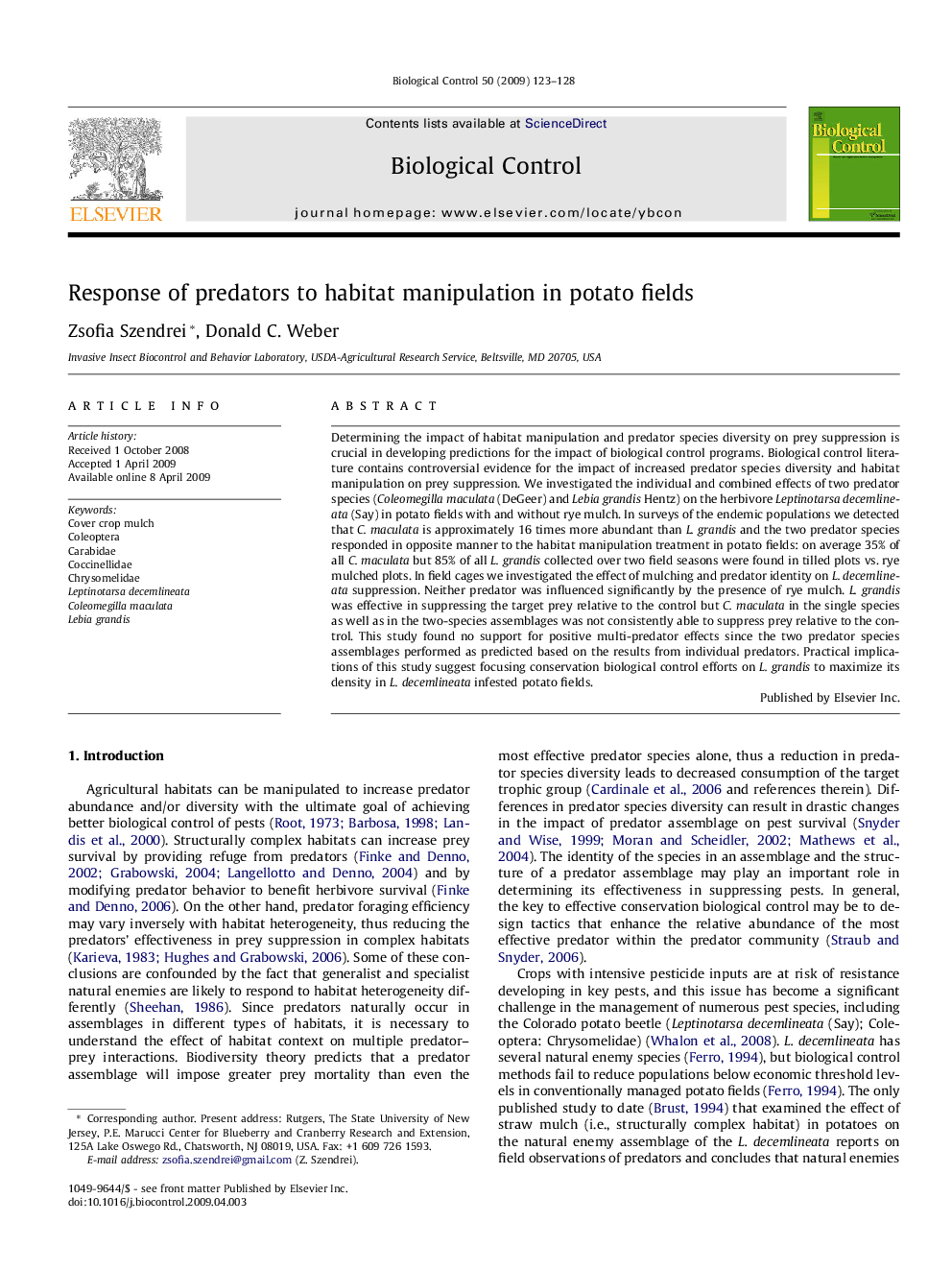| Article ID | Journal | Published Year | Pages | File Type |
|---|---|---|---|---|
| 4504638 | Biological Control | 2009 | 6 Pages |
Determining the impact of habitat manipulation and predator species diversity on prey suppression is crucial in developing predictions for the impact of biological control programs. Biological control literature contains controversial evidence for the impact of increased predator species diversity and habitat manipulation on prey suppression. We investigated the individual and combined effects of two predator species (Coleomegilla maculata (DeGeer) and Lebia grandis Hentz) on the herbivore Leptinotarsa decemlineata (Say) in potato fields with and without rye mulch. In surveys of the endemic populations we detected that C. maculata is approximately 16 times more abundant than L. grandis and the two predator species responded in opposite manner to the habitat manipulation treatment in potato fields: on average 35% of all C. maculata but 85% of all L. grandis collected over two field seasons were found in tilled plots vs. rye mulched plots. In field cages we investigated the effect of mulching and predator identity on L. decemlineata suppression. Neither predator was influenced significantly by the presence of rye mulch. L. grandis was effective in suppressing the target prey relative to the control but C. maculata in the single species as well as in the two-species assemblages was not consistently able to suppress prey relative to the control. This study found no support for positive multi-predator effects since the two predator species assemblages performed as predicted based on the results from individual predators. Practical implications of this study suggest focusing conservation biological control efforts on L. grandis to maximize its density in L. decemlineata infested potato fields.
